#linguaphile
Note
13 for the ask game?
Ahhh, thank you for asking, @linguaphile! ❤️
13) favorite texture(s) and/or material(s)?
I love a soft cotton. I love how cotton is breathable yet sturdy — and so versatile, the foundation of fabrics from terrycloth to denim.
Also glass. Watching a glassblower in Corning, N.Y. must have been some sort of formative, childhood experience. The way glass is elastic until it’s not, strong until it’s not, (clean until it’s not).
And real wood with knots and rings and all that. Yes. Teak. Cherry. Mahogany!

Anyway, there’s something about the natural materials and their textures that’s so real, you know?
Thank you again for asking!
>questions from the ask game<
4 notes
·
View notes
Text
What are some untranslatable or confusing slang words or sentences that would make no sense without explanation? I’ll go first!
Using “ass” as a suffix — mostly used to indicate a sense of “a lot” or “entirely.” Also used to increase the intensity of the word. Can be used to indicate anger or to be funny.
“Bless your heart.” — Southern United States — Passive aggressive “F**k you.”
#asking tumblr#funny#langblr#language#linguistics#what do I tag to extend my reach#foreign languages#slang#american slang#linguistique#linguist humor#linguaphile#linguistics memes#italian langblr#french langblr#malay langblr#what do i put here#reblog game#russian langblr#ukrainian langblr#spanish langblr#chinese langblr#arabic langblr#??????? tumblr#culture help#please be nice#rockie talkies
45 notes
·
View notes
Text
acerbic | əˈsərbik
adjective
(especially of a comment or style of speaking) sharp and forthright.
i.e. "her acerbic wit."
Expressing harsh or sharp criticism in a clever way
#acerbic#wit#sharp#forthright#acid#acidic#critical#criticism#direct#communication#speech#dictionary#thesaurus#linguaphile
2 notes
·
View notes
Text
Psychologists and neuroscientists are captivated by the human capacity to communicate with language. By the time a child can tie his or her shoes, enough words and rules have been mastered to allow the expression of an unlimited number of utterances. The uniqueness of this behaviour to the human species indicates its centrality to human psychology....
New research published in the Proceedings for the National Academy of Sciences about the different connections going on in the brains of Mandarin and English speakers, demonstrates just how flexible our ability to learn language really is.
Real-time brain networking ["Connectionism"]
connectionism – the idea that knowledge is distributed across different parts of the brain and not tucked into dedicated modules like Broca’s area...
Instead of pinning miracles of cognition to singular brain areas, complex processes are now viewed as distributed across different cortical areas, relying on several parts of the brain interacting dynamically.
For example, language requires that the sounds heard in speech – decoded in the auditory cortex – must be integrated with knowledge about what they mean – in the frontal cortex.
Comparing tongues
Tone matters in English, just not to the same extent as in Chinese. For example, think of how your delivery might change the meaning of the question “Where have you been?” to convey suspicion, surprise, curiosity, or jealousy.
Mandarin Chinese is a tonal language in which the same basic sounds can refer to vastly different things based on the tone with which it is spoken. In a non-tonal language such as English, tone might convey emotional information about the speaker, but indicates nothing about the meaning of the word that is spoken.
Research on English speaking & Chinese speaking brains
Chinese speakers had stronger connections leading from an area of the brain called the anterior superior temporal gyrus – which has been identified as a “semantic hub” critical in supporting language – to both Broca’s and Wernicke’s area. This increased connectivity is attributed to the enhanced mapping of sound and meaning going on in people who speak tonal languages.
The second difference showed activation in an area of the brain’s right hemisphere, but only among the Chinese speakers. This brain area, the right superior temporal pole, has been implicated in Chinese tones before but – perhaps more importantly – has until now been considered completely separate from the classic language network in the left hemisphere.
The findings emphasise the importance of developing a bilateral network between the two brain hemispheres to speak and understand languages, particularly for tonal languages like Mandarin Chinese.
New avenues for research
We can expect more such differences to emerge as future research focuses increasingly on non-English speaking participants. Much of what we think we know about human psychology is based on “WEIRD” participants: western, educated university students from industrialised, rich, and developed nations. Other cross-linguistic, cross-cultural, or cross-class differences might emerge as more research develops.
#english#language#chinese#linguistics#neuroscience#linguaphile#neurolinguistics#tonal languages#tone
3 notes
·
View notes
Text
This essay examines the recent critical debate on the hermeneutics of hospitality. It explores the philosophical and ethical implications of Paul Ricoeur’s notion of linguistic hospitality as a translation between host and guest, enemy and friend, and compares it to Derrida’s notion of impossible hospitality.
In On Translation, Ricoeur spells out important implications of this paradigm of linguistic hospitality:
Translation sets us not only intellectual work … but also an ethical problem. Bringing the reader to the author, bringing the author to the reader, at the risk of serving and of betraying two masters: this is to practice what I like to call linguistic hospitality. It is this which serves as a model for other forms of hospitality that I think resemble it: confessions, religions, are they not like languages that are foreign to one another, with their lexicon, their grammar, their rhetoric, their stylistic which we must learn in order to make our way into them?
A crucial step in resisting the lure of the Perfect Translation is to honor a dialectical balance between proximity (welcoming the stranger into our midst) and distance (acknowledging that something is always lost in translation: the other’s meanings can never be completely mine).
4 notes
·
View notes
Text

0 notes
Photo

My experiment for the day: You've seen those science experiments where they take a metal plate and put it on a speaker with some sand on the plate, and at different frequencies the sand makes different patterns? Well I thought, "What would that look like for each individual sound of the human voice?" So I took the International Phonetic Alphabet (these are just the vowels! Haven't even cracked into pulmonic consonants yet), set a paper plate on a speaker with some pepper, and used an IPA reader to constantly shout at me full blast 😆 These are the results
#linguistics#language#languages#language learning#language lover#language lovers#linguaphile#linguaphiles#conlang#conlangs#alphabets
1 note
·
View note
Text
The reason *we* is such a fun word is that half of the time it is used as a way to bring the speaker closer to others and the other half of the time to deflect responsibility away from the speaker.
James W. Pennebaker, The Secret Life of Pronouns: What Our Words Say About Us
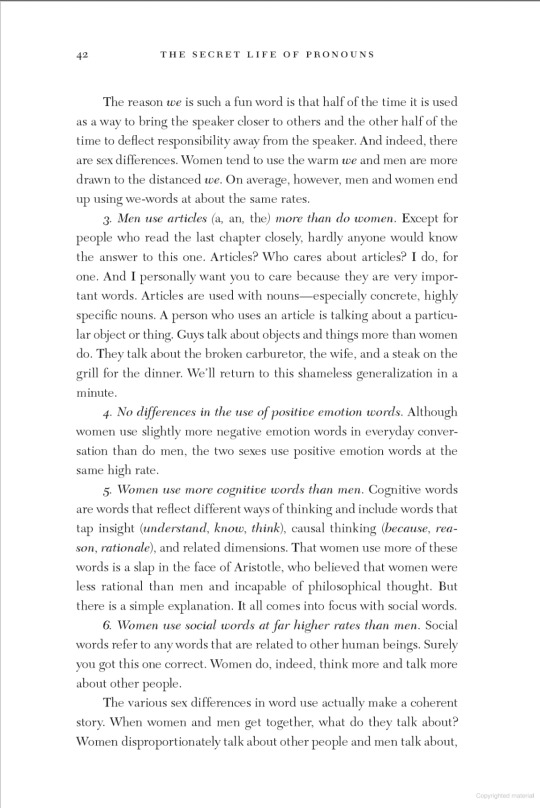
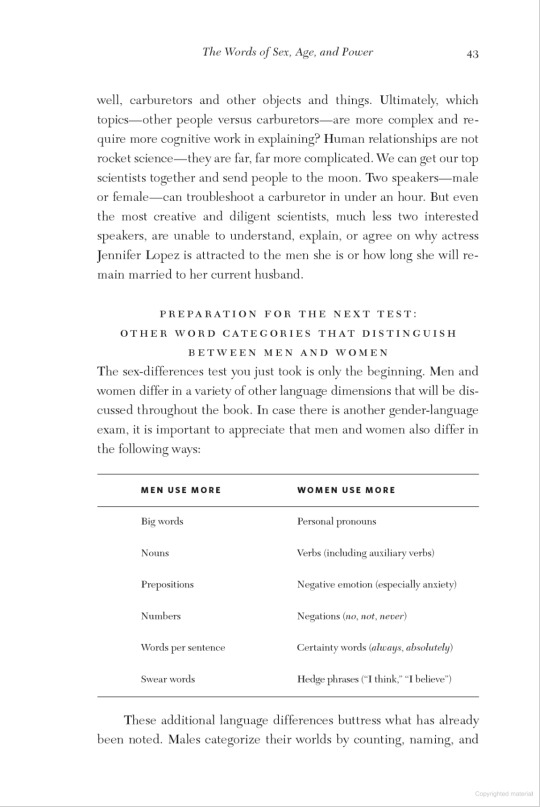

#language#pronouns#quotes#linguist#linguaphile#we#james pennebaker#pennebaker#the secret life of pronouns#secret life of pronouns#words
0 notes
Text

I’m on Drops and uh

One of these things doesn’t belong
0 notes
Text




The purpose of this post is not say that iQIYI's subs are incorrect. Rather, it is to highlight some of the nuances that, in my opinion, may have been lost in translation. We all know that our baby boy Rain is a brat with penchant for swearing, so him actually saying "fuck me" is more in line with his character and works better in context [1]. In this case, the context is Payu's response — he calls Rain a "naughty boy (เด็กขี้วะ)" and bites his lip in a punishing, albeit playful, manner [2]. This is a callback to one of the established rules in their D/s relationship — no swearing.
—
LOVE IN THE AIR (2022), Ep.6
#love in the air#love in the air the series#payu x rain#payurain#rain x payu#rainpayu#i promise i'm done#the linguaphile in me just couldn't let this go#now i can sleep in peace#would this be considered meta?#tagging it anyway#t:meta#s:lita#lita ep 6
2K notes
·
View notes
Text
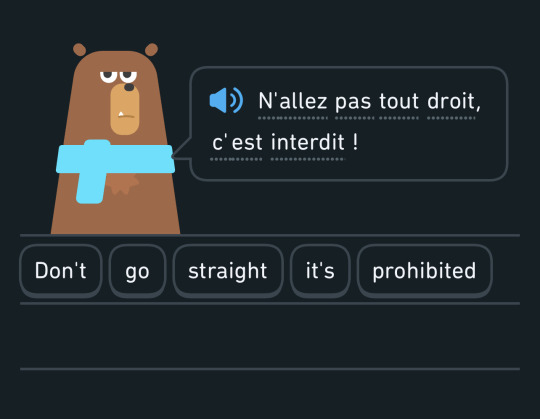
Happy Pride Month, linguaphiles 💅✨
#french#duolingo memes#duolingo#langblr#language#language blog#languageblr#language meme#language memes#language learning#linguistics humor#français#french lessons#learning languages#pride month#happy pride 🌈
375 notes
·
View notes
Note
Fic Rec: Language Barriers by Kastaborous
-> Fic about language and the Chain! One of my favorites :)
Or: Language Barriers
Summary:
The group made their way over to the two Hylians, where the individual they had rushed to save was conversing with the newcomer. The newcomer was heavily scarred on his left side, and from the bow on his back, he was the archer who had brought down many of the monsters.
“Hello,” Time said, as he nodded to them. “Could you point us toward Castle Town?”
The scarred man blinked. “Nanda?”
…
The Heroes of Courage are spread across ages. Hundreds to thousands of years between them. It should come as no surprise that they are having some trouble communicating. But when they’re dropped in a world of alien technology and a language wholly unfamiliar, they really wish Hylia had thought ahead.
Or, the gang-meets-wild fic in which there is an appropriate amount of linguistic drift between Links, Hylia does not provide Google Translate, and Wild is a linguaphile among other things.
Tags:
Languages and Linguistics
Fluff and Humour
Dramatic Irony
Canon-typical violence
Linked Universe Link(s) and Wild First Meet
Language Barrier
Word count: 70,938
Finished: Yes
#fic recommendation#linked universe#lu wild#lu time#lu twilight#lu warriors#lu hyrule#lu sky#lu four#lu wind#lu legend#sorry for being late i need to get better at this
20 notes
·
View notes
Text
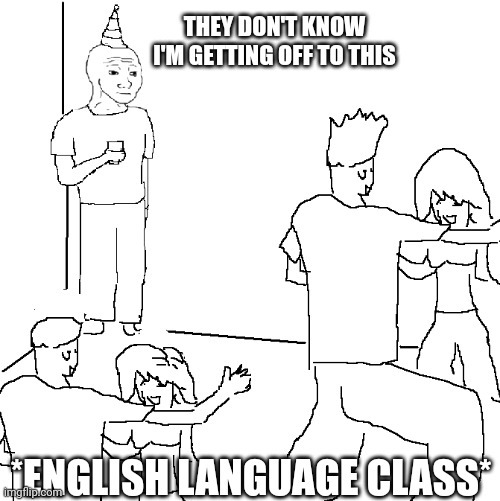
just linguaphile things
7 notes
·
View notes
Text
JACQUARD, BROCADE, DAMASK: WHAT'S THE DIFFERENCE?
Jacquard fabric is any fabric woven on a jacquard loom. This weaving technique allows intricate and complex designs to be woven in the fabric.
Jacquard is a fabric with an intricately variegated or raised pattern, distinct from other patterned materials because the pattern is woven into it rather than printed onto it. The motif or image on a jacquard often appears in a different color or texture than the rest of the material, but it can be the same color. Jacquard designs can be Byzantine in complexity (think tapestry) or as simple as a repeating geometric pattern.

A brocade (below) is an example of a jacquard, a heavy fabric with a colorful allover raised pattern or floral design with an embossed or embroidered effect; it may or may not incorporate gold or silver threads. The term itself does not indicate a specific weave, but instead describes the aesthetics of this typically elaborate fabric.
Unlike damask, brocades are not reversible. Brocade has been around for centuries. The term comes from the Italian broccato, meaning ‘embossed cloth,’ which in turn comes from brocco, meaning ‘twisted thread.’
Brocades can be set apart from damasks in that the back of a brocade will typically have groups of threads that have been trimmed away or left out of the weave and look more messy.

The jacquard loom can also produce Damask (below): a reversible patterned material where the ground is one weave and the designs are another, resulting in patterned areas that possess a sheen and reflect light; a damask can be ‘tonal’ or multicolored.
The word damask comes from from Damascus, the current capital of Syria, where it was one of five basic weaving techniques used by Byzantine and Islamic cultures in the Middle Ages. The shorter weft patterns in damask allow for more subtle effects in the fabric to be created as it plays off of shadow and light. Damask weaves also contain a higher thread count than that of brocade, as they are woven with one warp yarn and one weft yarn.
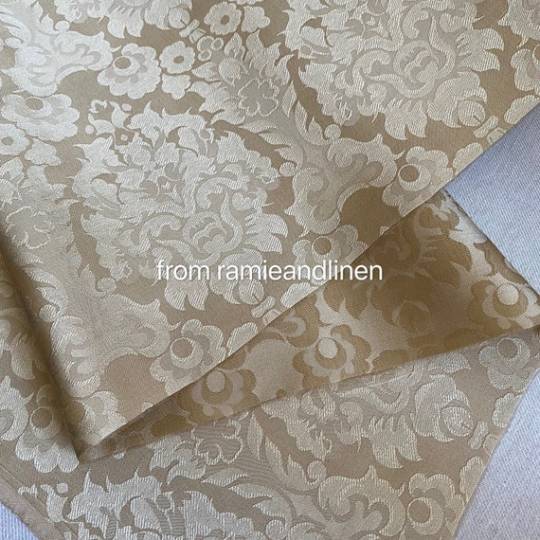
#damask#brocade#tapestry#fabric#fabrics#jacquard#weaving#loom#vocabulary#sewing#fashion#textile#textiles#linguaphile#words#dictionary#thesaurus
2 notes
·
View notes
Text
THE QUESTION
"Does writing down what I think and saying what I think activate different parts of the brain and neuropathways? I feel I have an easier time writing than I do speaking, so I wonder. Thank you for your time and knowledge!" - Minski
THE ANSWER
Hi Minski,
Last week I was at the Society for Neuroscience conference (think: 31,000 neuroscientists in the San Diego Convention Center), and I decided the best (read: funnest) way for me to tackle your question was to crowdsource.
So, late on night, at a bar filled with neuroscientists, I posed your question to 3 other Stanford Neuroscience PhD students. Here’s what we came up with, in our informal brainstorming session.
One graduate student remembered a series experiments involving split brain patients (whose corpus callosum, the part of the brain that connects the left and right hemispheres, is severed). So in these experiments, the researchers presented a picture to a patient in such a way that the image filled only ½ of the patients visual field. The idea here is that the visual image would only be captured by one eye, and therefore predominantly only be encoded by one side of the brain (this is a feature of how the human visual system is wired). So the image is presented to only one side of the brain, and then the patients are asked to pick a second object that was associated with the original picture, from a larger sample of objects. So people would pick the object associated with the original picture. And depending on which side of the brain was processing the original image, when the researchers asked the people why they picked the second object, they couldn’t tell the researchers why. But if the researchers then asked the people to write down their reason, the people were able to do that just fine.
Another example comes from the laboratory of Dr. Michael Gazzaniga. His patient, V.J. had her corpus callosum severed as a treatment for intractable epilepsy. After her surgery, V.J. was no longer able to write, but was able to speak and understand spoken language without any problem. So the idea here is that speech and writing are lateralized functions in the brain. Indeed, experiment conducted with the help of V.J. and other split brain patients have lead to the understanding that spoken languages are stored/encoded on the left side of the brain, whereas writing is controlled by the right side of the brain. For a more in-depth discussion of V.J. and the lateralization of speaking/writing, I highly recommend a 1996 article published in the New York Times, “Workings of Split Brain Challenge Notions of How Language Evolved”, written by Sandra Blakeslee.
With our discussion now focused on lateralization of behaviors, another graduate student mentioned a book by Stanislas Dehaene, called Reading in the Brain. This book talks about a lot of ideas, but the basic premise is that there are a lot of visual pathways that words/concepts can go through, that are completely independent from the pathways that those same word/concepts go through when you are hearing them. But at some point, there is a convergence of those various pathways - at some level, there is part of your brain that deals with semantics, where the representation of the written word ‘manatee’, meets the representation of the spoken sound ‘manatee’, and presumably the representation of the image below. So there is a region of your brain that is going to be encoding language, but there seem to be different neural pathways for accessing that general region (visual, verbal, aural). Our discussion reiterated the observation that some people display selective aphasia; for these folks, if you put a picture of a cat in front of them, and ask ‘What is that?’, you’ll get a response of ‘It’s, an animal. Not dog.’ But they won’t be able to say ‘cat’. And if you ask these people to write down that the picture is, they’ll be perfectly able to write the word ‘cat’.
So with these extraordinary examples, our conclusion was that it is not at all unreasonable to think that a person could be better at written language than verbal language, and at expressing their comprehension of language better through writing as opposed to speaking. And indeed this point has been highlighted in non-neuroscience based studies of the most effective ways to teach children: whether teachers should talk to the students or should draw on the board.
1 note
·
View note
Text
Gilbert is the type of dad to overhype Ludwig at ANY given chance, no hiding it, my kid is better than yours Patricia.
Roderick is the type of dad to comment causally about stuff his kids have done then give someone A Look. Like,
"oh yes, Liesl plays piano, violin, flute, mastered every one. Currently she's starting the harp and cello. Such a gifted dancer as well! You should see her perform some time."
"Ludwig speaks seven languages, is learning his eighth and ninth right now. Such a little linguaphile that one. And you should hear him recite poetry, an absolutely beautiful speaking voice"
"Edith, such an overactive imagination. She's written seven whole plays. They're considering one of them for the stage already. Perhaps if they do find the money to finance it I'll see you at the playhouse."
"Yes, Franz does dabble in the arts. He paints as it is what's most available, but his heart does rest in architecture. I had to speak with his teacher about how, finger painting and Popsicle stick towers are bellow him"
#roderick is raising snobby kids and he doesn't care#aph austria#hws austria#aph prussia#hws prussia#aph germany#hws germany#aph liechtenstein#hws liechtenstein#aph kugelmugel#hws kugelmugel#aph austria hungary#hws austria hungary#hetalia#hetalia hc
45 notes
·
View notes